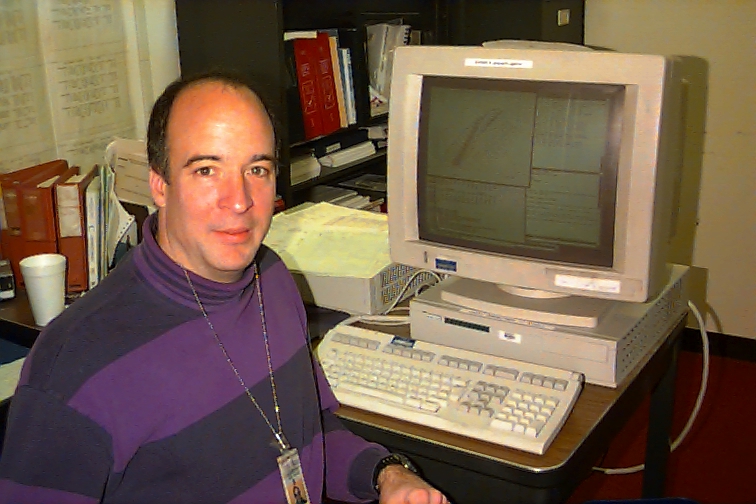
TRANSP CODE FACT SHEET 
1. Code Name: TRANSP
2. Category: XI. Experimental Data Analysis
3. Responsible Physicist: D. McCune (this sheet updated, Dec 2011).
4. Others involved in code development: at PPPL: R. Andre, R. Goldston, M. Gorelenkova, G. Hammett, R. Hawryluk, Keshavamvrthy Indireshkumar, C. Ludescher-Furth, R. McCann, A. Pletzer, J. Schivell, T. Terpstra, R. Wieland, X. Yuan, M. Zarnstorff; at JET: B. Balet, D. O'Brien, J. Conboy, P. Stubberfield; at KFA/Juelich: M. Evrard, J. Ongena; at MIT: J. Schachter; at ORNL: R. Goldfinger; at Lehigh: G. Bateman, F. Halpern, A. Kritz, L. Luo, A. Pankin.
5. One line description: TRANSP is a time dependent 1D tokamak transport data analysis model with generalized non-circular flux surface geometry.
6. Computer systems which code runs on: Linux, PathScale, Intel and gfortran Compilers.
7. Typical running time: ~ 30 min. - 4 weeks
8. Approximate number of code lines: 1,300,000 (Forrtran excluding comments) for TRANSP itself, 180,000 for supporting codes (RPLOT, UFILES, TRDAT, ...).
9. Does this code read data files from another code? Yes. The code reads specially prepared tokamak diagnostic data ("UFILES", "MDSplus") from TFTR, CMOD, or whatever tokamak produced the data to be analyzed. Such diagnostic data files are generally written by specialized tokamak diagnostic data analysis codes. UFILES is a simple standard format for numerical data that was invented for TRANSP internal use but has now been adopted as an interface option in a number of codes. MDSplus is a data acquisition and analysis system developed jointly by MIT, LANL and IGI(Italy).
10. Does this code produce data files that can be read by another code? Yes. The TRANSP output data is accessible by a utility called RPLOT. RPLOT can write file data in "netCDF", "UFILES" or "MDSplus" format which is understood by many codes. Tools exist for loading databases from RPLOT. For example, much of the ITER EDA database for existing experiments consists of UFILES created out of TRANSP/RPLOT run data. The data can also be read via IDL or from user applications via a library interface available through NTCC.
11. 1-2 paragraph description of code: TRANSP is a system for time dependent 1 1/2 dimensional transport and confinement analysis and diagnostic simulation of tokamak data. A TRANSP analysis requires extensive diagnostic input data which it uses to model the evolution of the tokamak plasma, computing solutions to equations describing poloidal field diffusion, particle balance, power balance, and momentum balance. Auxiliary models are provided for neutral beams, ICRF, sawteeth, and pellets. A wide range of options are provided for modeling of phenomena such as current diffusion for which direct measurements might not be available. A variety of diagnostic simulations are computed, for comparison back to the experimental data. A typical input data set consists of the one and two dimensional UFILES which contain: the evolution of the profiles of plasma electron density, electron and ion temperature, radiative power emission, the evolution of the plasma boundary location and shape, the evolution of toroidal field, plasma current, surface voltage, and magnetic estimate of plasma energy content, and impurity content, ion temperature and/or neutron emission. In addition, imposed experimental conditions are described, e.g., in the presence of neutral injection the beam powers, voltages, and geometries are specified. TRANSP output consists of a set of data files which may be accessed by the RPLOT interactive plotting program. RPLOT accesses output data of the form f(t) and f(x,t). Higher dimensional data (e.g. fast ion distribution functions) can be output by the TRANSP ACFILE mechanism. Unix TRANSP is distributable on the Internet; Internet based code development collaborations are under way (at JET, ASIP and Garching). More information is available on https://w3.pppl.gov/TRANSP.
12. Similar codes to this code, and distinguishing differences: TRANSP descended from BALDUR in the 1970s, with emphasis on data analysis rather than predictive simulation.
13. Journal References describing code: see refs.doc
14. New code capabilities planned for next 1-2 years: Code now supports up-down asymmetric flux surfaces in fixed and free boundary mode and predictive transport & solvers models. ADAS atomic phusics was added. 3D Halo Model is in progress.
15. Code users: Experimental groups on AUGD, CMOD, D3D, EAST, HL2A, IGTR, ITER, JET, JT60, MAST, MST, NSTX, RFXM, TFTR.
16. Present and recent applications of code: analysis of enhanced reverse sheer shots on TFTR and D3D; projection of these shots to DT fuel (1995-1996).
17. Status of code input/output documentation. Check one: ( ) does not exist ( x ) incomplete ( ) exists
18. Year Code was first used and present frequency of use: first use, 1978. Current PPPL production rate, 18 runs/day.
19. Estimate of Man-Years invested in developing code: 140
20. Catagories of usage of Code (Check all that apply): (x) application code to do analysis and prediction of experiments (x) numerical testbed of theoretical ideas ( ) physics module to be used in integrated moddelling ( ) code for machine design
21. Language code is writen in: Fortran-77, Fortran-90 and some C, C++ and Python.
22. Results of intercomparisons with other codes and results of validation against experiments: Contact Experimental Groups.